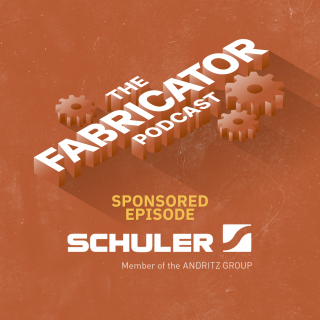How hydroforming works and serves metal manufacturing with Schuler
In this episode of The Fabricator podcast, sponsored by Schuler Group, host Dan Davis interviews Chris McMahon of Schuler North America about tubular hydroforming and how it serves the manufacturing industry. McMahon explains that the metal forming process involves loading a tube into a die, closing the die, and using water pressure to shape the tube. He highlights the advantages of hydroforming, such as eliminating secondary processes and providing consistent part-to-part results.
McMahon also discusses the success stories of using hydroforming with manufacturers like Ford Motor Company, as well as its applicability in industries beyond automotive for trailer hitches and frame components. He emphasizes the expertise and support offered by Schuler in the hydroforming process.
Email us at podcast@fmamfg.org with any comments, questions, or sponsorship opportunities.
In This Episode
Learn more about Schuler Group
ABOUT THE FABRICATOR PODCAST
The Fabricator Podcast brings you conversations with people in manufacturing who make things out of metal. We speak with manufacturers, metal fabricators, welders, job shop owners, small business entrepreneurs, artists, marketers, educators, and more. Host Dan Davis also goes beyond discussing just manufacturing and the skilled trades, and chats about pop culture, current events, food, music, movies, comedy, and, of course, robots. The Fabricator Podcast is presented by the Fabricators & Manufacturers Association.
Host: Dan Davis
Producer/Editor: Gareth Sleger
Video Producer/Editor: Brandon Geier
Ad writer/spokesperson/social media: Sara Spring
Additional video editing: Dana Wiker
Graphics: Billy Kulpa
Marketing support: Elizabeth Gavin, Mary Diamond
Sales support: Andy Flando, Amy Hudson
Web support: Mike Owens, Jared Carlow
Additional support: Ed Youdell, Maurine Semevolos, Lincoln Brunner, Tim Heston, Rafael Guerrero, Josh Welton, Darla Welton, Amanda Carlson-Hicks, Callie Check, Rick Lehnhardt, Judy Steinbach.
Where to listen to The Fabricator Podcast:
Follow The FABRICATOR:
- YouTube
TRANSCRIPT
Chris McMahon: We like to say water always wins.
Dan Davis: Having grown up on the Gulf Coast, I can vouch for that.
Chris McMahon: Exactly.
Sara Spring: This episode of The Fabricator podcast is sponsored by Schuler North America, a subsidiary of Schuler Group. Schuler North America, headquartered in Canton, Michigan, provides new equipment, spare parts and a portfolio of lifecycle services for all press systems. Schuler's hydroforming division provides localized tubular hydroforming production, die design and development, parts prototyping and full turnkey hydroforming solutions such as design, feasibility and tryout support.
Dan Davis: This is Dan Davis of The Fabricator magazine. Welcome to this very special episode of The Fabricator podcast. Today, we're going to get a little bit more into technology than we usually do. Joining me today is Chris McMahon of Schuler North America. Thanks, Chris. We're going to talk about tubular hydroforming and I think, if you don't know what it is, you're going to want to stick around and learn because it's a cool technology, but first, Chris, what's your background? How did you get involved with this?
Chris McMahon: My background is metal forming, stamping, wire frame assembly. Just new to Schuler, almost a year now. Previous to that, I was with the metal stamp or wire forming in the seating industry. Previous to that, I was with an extruder plastics rollforming, so I got a broad brush of industry experience in metal forming, a little bit of plastics, but we won't talk about that on this podcast for sure.
Dan Davis: Thank you. There you go.
Chris McMahon: Yes. Yes. Yeah, but that's my background, automotive primarily.
Dan Davis: What exactly is tubular hydroforming?
Chris McMahon: Tubular hydroforming, we're a smaller part of Schuler North America. A lot of folks should know Schuler. If you don't, check us out. Tubular hydroforming is we load a tube into a die and you close the die and you fill it with water. There's various forms of hydroforming. There's sheet hydroforming basically using fluid, hydraulics, to form the part. Tubular hydroforming is you load the tube into a die, you close the die and you use water pressure to make the form. That in its simplest form is what it is.
Dan Davis: Yeah. We actually had a hydroforming journal we published probably in the late '90s, early 2000s, so it's been around for a while. Why should someone choose Schuler for their hydroforming needs?
Chris McMahon: Why Schuler? It's the technology and the team. Obviously, Schuler, a part of Schuler, we have the largest local OEM support network in North America based in Canton, Michigan. We're just outside of Detroit. But why Schuler? It's the technology and the team. Each person on our team, except for myself, has at least 10 years of experience with hydroforming in one shape or form. Why Schuler? It's the, like I said, technology and team. We have the production in Canton, Michigan, so we're a bit unique. We have production. We make over a million parts per year in Canton. We serve as a tier one in some cases, but typically a tier two or tier three supplier. Hydroforming is a bit of a niche. It got a bad wrap, I don't want to be negative, many years ago. A lot of your oven handles and things like that were hydroformed, a lot of expansion on the ends, stainless steel that had a lot of annealing and some dry lubricants and just hydroforming. People think hydroforming is expensive. What we do, we just use water with a little bit of lubricant, but it's 95% water. For example, we make a lot of trailer hitches for the OEMs. We load a tube. We press bend it, hydroform it, shape it, pierce it and put it in the customer's container for the next assembly process for welding. That's why Schuler, because you're not bending it, annealing it, hydroforming it, annealing it, cutting it. That's what we focus on. It's just a very simple step. We do post-secondary operations as well. We can do laser cutting and finishing, welding, but really we just focus on just hydroforming, making the part and shipping it out.
Dan Davis: Yeah. The motivation for customers to come, is it mostly related to elimination of secondary processes, cost-effective part development?
Chris McMahon: Both. Both. For example, we made a rollover protection system for an off-highway industrial customer. They had five or seven different parts and stampings to make cab sites, again, for a wheel loader to protect the occupant. Working with them over a couple of years, we make one hydroformed tube. It's a six-inch diameter hydroformed tube, and it basically gave them one part, or two parts, a right and a left, and gave them repeatability. It took out a lot of additional steps in welding and processing, and what they found is, with their previous process, beyond the cost cab to cab, they weren't getting the same part. With hydroforming, it's very consistent part to part. Tubular hydroforming you got to think as there's a die, but it's almost more like a mold. You're loading the tube in. You're sealing it. You're forming it so it's very, very consistent.
Dan Davis: Yeah. Is there a material thickness, wall thickness that comes into play with this?
Chris McMahon: Absolutely. Again, every part is different. Typical parts are the two to three-mil wall thickness, but we do have a part that's 16 millimeters thick. We hydroform. We press bend and hydroform a 16-millimeter thick part. Yeah, there's limitations, but again the part size, shape and the end product dictates that, so we'd like to say water always wins.
Dan Davis: Having grown up on the Gulf Coast, I can vouch for that.
Chris McMahon: Exactly.
Dan Davis: The trailer hitch thing is very interesting in the sense that I always thought that was a solid product, machined, but yet you described it as a result of the hydroforming process. Is there much success in taking parts that were once done in a traditional manner and maybe adapting it to hydroforming?
Chris McMahon: Absolutely. Absolutely. A lot of your trailer hitch is certainly in your aftermarket are CNC rotary bent, and that's fine, but you have variability. I mean, there's material variability tube to tube. We use welded tubes. They're rolled and welded, so not every part is perfect. Hydroforming, basically we lock it down and force it into submission, for lack of a better term, so again that mold aspect you get part to part is a lot more consistent. We also do some axle. The 16-millimeter part I was telling you about is an axle for a heavy truck. Again, it's very consistent and you're locking it in, whereas CNC rotary bending, yes, it can be done, may not be as consistent. If you have any material variability, hydroforming is, obviously, we feel, a lot better for those processes.
Dan Davis: I see. We've talked about some examples. Do you have other success stories that may be connected to the hydroforming process?
Chris McMahon: We do, and part of getting back to why Schuler, a great success story for us is we have a customer that has Schuler processes. They do their own hydroforming. They do their own stamping. We worked with them, in this case it was Ford Motor Company, to develop the tools and the hydroforming. Schuler did a lot of work back with the aluminum F-150. I'm not speaking out of school. It was in the news, and it helped Ford develop a standard for hydroforming. A recent success story is working with our customer. They had Schuler press. We worked with them on the tooling. They're the tier one to Ford and Ford extended a part on the new Mustang, and they didn't have capacity. They're able to come to us and say, "Schuler, we need you to take this one part back that we've been running for the last two or three years. We need you to take that back because we don't have capacity," and we were able to do that. We made an investment on our part in a bend cell. We had to invest in a bend cell. A real success story is being able to help our customer, ultimately the OEM, maintain production when, as we all know, things happen. This gets extended and there's not capacity. At our place, we can plug and play that. That's another thing about Schuler. Being in Canton, close to obviously the Detroit Three, we're able to just plug and play and assist our customers. We can also, if there's a press-down situation, God forbid that happens, but it does happen, we can plug those tools into our process and away we go.
Dan Davis: Do you feel like the education level of people in the industry are where it needs to be to understand what hydroforming can do for them?
Chris McMahon: Personally, no, because again, like I said before, hydroforming in some ways got a bad rap years ago. It's like, well, that's expensive and you've got to do this annealing and this dry lubricant. Those processes are fine, but we've simplified it. I feel we've simplified the process. That's why we want to educate the market and the industry, what we can do with hydroforming. It's evolved. Like I said, it used to be a lot of oven handles, a lot of expansion, a little T fittings for plumbing, obviously PVC, plastics unfortunately where our metal former have taken that over. Hydroforming has evolved into the trailer hitches, roof rails. We do a lot with dual-phase materials. We hydroform any metal, but dual-phase material is a lot for rollover protection in various cars and trucks and aluminum as I mentioned with Ford back in the mid-2000 for the F-150.
Dan Davis: Schuler can not only do the hydroforming. They can sell the presses that do the hydroforming, but they also help engineer systems for people that may be interested in hydroforming. Is that correct?
Chris McMahon: Absolutely. Absolutely.
Dan Davis: How does that work?
Chris McMahon: We have a team, like I said, a great team with 10 or more, 10 to 35 years experience. If you add up everybody on the team, there's well over 150 years experience in total. We work through the FEA analysis, the simulation. We have the simulation software to help customers understand how a part can be hydroformed. We help them design the part or input to it. Obviously, the customer in most cases is design responsible, but we have a team who will do the FEA. We can do the prototyping. We can do obviously the tool build and, as we've already discussed, the production. We do have customers, and they may not be a Schuler press customer, that we sell tools to, and we offer the support, as I said, having the largest local North America OEM support network for presses as well as hydroforming. We have many customers that don't have Schuler press yet, unfortunately. We'll work on that. Yeah, it's working directly with the customers' engineers. We do get parts, say we want to hydroform it, we mentioned it before, CNC rotary bend, some axle parts. We're getting some inconsistency part to part. We can work with them. Show them where the thinning part, thinning areas are and help them evolve that design as something that can be hydroformed and put into their vehicle and their product.
Dan Davis: Yeah. Is there a good volume level for hydroforming?
Chris McMahon: There is, absolutely. I mean, the trailer hitches we run for one of the Detroit Three is well over 300,000. I mean, obviously, tooling investment is a consideration. I will say a hydroform tool is a bit more than your typical stamping tool. It's not going to be a hundred to 150,000. It's going to be a bit more than that typically, but the volumes we have, the axle tube I told you, we run about 500 a year. However, that application, the CNC rotary bending wasn't acceptable, and then we have parts we run over 300, 400,000 a year, so it just depends on the application. The rollover protection for the off-highway projects is about 10,000 a year. Again, as with any project, your capital tooling investment, how is it amortized, but automotive has a little bit shorter window to look at. They're usually looking at five to seven, but your off-highway folks are looking at 10-plus years. That's another thing to consider when hydroforming, but again work with them through the FEA, through the engineering, through the prototyping, through the PPAP run and provide the turnkey solution, if we can use a buzzword, a turnkey solution with the team, so not only do we have design engineers, manufacturing engineers and process engineers. We can assist a customer with their hydroforming tooling, and then that's what we do. Even if it was something that we didn't make at Schuler, we can assist with that.
Dan Davis: Right. Right. Were you familiar with hydroforming when you got involved in manufacturing in general?
Chris McMahon: I wasn't, and that was part of the excitement for me, as I mentioned, having a metal stamping, wire forms, tube bending, CNC bending, some machine tooling. Back in the day, hydroforming, I understood what it was, and I had the misconception that a lot of people would be, "Oh, it's really expensive and it leaves these little tiny small parts for plumbing and really exotic." Yeah, I'm learning in almost a year now with Schuler, really learning about hydroforming and what can be done and what can't be done. I mean, you can draw it in CAD, but you may not be able to hydroform it or the tooling investment may not justify the needs.
Dan Davis: Yeah. What's been some of your big highlights since you've started working with the hydroforming?
Chris McMahon: The highlights for me is learning and being able to help the customers develop, and we had a success story with another Detroit Three able to make another advantage of hydroforming, a success story. Obviously EVs, and electric vehicles are all the buzz these days. A customer came to us, and they have an electric version of the vehicle and a gas version of the vehicle. The part was their upper radiator support, very similar, except a little kick-out in it and, through hydroforming, we were able to make typical hydroformed die. At least a Schuler die has two cavities. Like I said, it's much like a mold. We're able to make an ICE version, internal combustion engine version, and a battery electric, BEV, version in the same tool with each press stroke. That's another advantage to hydroforming. You've got two cavities. As long as your parts are reasonably close or they're not larger than the press bend, you can make multiple parts in the same press stroke so you're not constrained. The other advantage to hydroforming, and what's not a successful story, but what I think is needed, is we're concerned with outside of metal. That rollover protection system I mentioned, we were able to incorporate five to seven parts into one. We were down to two, but we made four different products' wall thicknesses in the same die. We currently make a four-millimeter thick part and a six-millimeter thick part in the same die, so different than stampings where you'd have to change everything and shim everything up. We're able to offer multiple products as well as cost reductions. Sometimes, a customer will come to us and say, "We want to reduce material and take cost out, take weight out." We're able to do that with hydroforming with little, sometimes no but little adjustment to the tool. It's typically the seal cone if you're changing the inside diameter. That's what I think is neat about hydroforming versus stamping and other metal fabrication processes.
Dan Davis: Yeah. It's amazing the consistency you get out of the process from part to part.
Chris McMahon: Yes. Yes, it's part to part, plus minus 0.5 mil, 0.1 mil, 1 mil, so, yeah, very consistent. Another success we've had at Schuler is working with dual-phase material. Your gen-three dual-phase material, you get a lot of spring back. We've worked with customers where, I won't say who, but they've re-cut a tool a dozen or more times. Our competency and our engineering staff were able, if we quote a customer, to re-cuts with the dual-phase material because we all know dual-phase material. It's finicky at times, but we're very competent in working with that. You're seeing a lot of dual-phase materials in your, certainly, automobiles, a lot in your EV. I mean, it's all about, "Can we keep steel and metal in EV?" We're seeing a lot of dual-phase material in the roof rail, the A pillar, the B pillar of the vehicle.
Dan Davis: Has hydroforming emerged as a good process to deal with these difficult materials?
Chris McMahon: We believe so. Absolutely. Absolutely.
Dan Davis: It's interesting because, obviously, with the evolution of automotive vehicles, there's a lot more new material and a lot more stress being put on those engineers to have fewer parts, light-weight it. To have this emerge as a tool to help with that is interesting.
Chris McMahon: It is. It is, and light-weighting is a part of it. I mean, something that hydroforming has been used for many years is in frame components. We make several frame components where, if you remember back in the '80s and '90s you had your body-on-frame vehicles, they'd rust away because you had two C channels welded together, and it was garbage the frame, the frame. With hydroforming, we take a galvanized tube, tubular hydroform, laser cut it. They could put two or three of those together, and you've got a much more robust frame, less weight, stronger. The other part of hydroforming, it work-hardens. We're basically destruct testing every part. We're work-hardening it. In the hitch example, we press bend it and we add a shape. We take a round tube. We bend it into a trailer hitch, and we're adding a square shape in the middle so that gives the customer an area to weld the hitch on and weld it to the vehicle, but also strengthens the tube. We can bring that material up in a sense to a higher KSI level so they get a stronger tube. They can, again, every application is different, but can use a thinner material, maybe a less-strong material and bring that up to specification. That helps with the light-weighting. With EVs, a lot of the talk is protecting the battery, protecting the occupant. Hydroforming, we're able to add some shape to that and give that some strength. We've done in the past a lot of crush tips for body-on-frame, so to give it strength, but also crush-ability for the impact zone. That's another thing hydroforming can do versus other processes.
Dan Davis: Yeah, and it's fair to say hydroforming has applicability outside of the automotive industry as well I would imagine.
Chris McMahon: Absolutely. Absolutely. I mean, years ago, Schuler, we did millions of oven handles and refrigerators side handles. As technology's evolved, I mean rollforming in plastics have taken a lot of that up. We used to do a lot in exhaust. We did a lot of fancy exhaust. We've done motorcycle, I mean, motorcycle frames, bike frames since the beginning of time, a lot of hydroforming, but other processes have evolved, and then we've evolved hydroforming over that time as well.
Dan Davis: Yeah, it's fun seeing something that's been around being applied to new applications.
Chris McMahon: Yeah. I mean, Schuler's almost a 200-year old company, so hydroforming the only thing we do, but a lot of it has been around hydroforming and then having that expertise and seeing the industry evolve. It's neat to be here at FABTECH and see the other processes and technologies. I saw a booth. They were making oven handles and rollforming. I don't like to see that. I like if they're hydroformed, but they're rollforming, and that's fine, too. We'll just make more trailer hitches-
Dan Davis: There you go.
Chris McMahon: ... and roof rails.
Dan Davis: In summary, water always wins. I like that. Where can they go to find out more information on hydroforming and Schuler?
Chris McMahon: Go to schulergroup.com.
Dan Davis: Awesome. Thank you for joining us on this episode of The Fabricator podcast sponsored by Schuler. Thank you, Chris, for your time.
Chris McMahon: Thanks, Dan. Yeah, it was very interesting.
Dan Davis: I appreciate it.
Chris McMahon: Yeah, I enjoyed the conversation. If you have any comments, questions for us, suggestions, send it to podcast@fmamfg.org. Thanks a lot, and remember to tell your friends about The Fabricator podcast. Bye.
Sara Spring: The Fabricator Podcast is a production of Fabricators and Manufacturers Association located in Elgin, Illinois. The show is hosted by Dan Davis and the staff of FMA Communications. The podcast is produced by Gareth Sleger and recorded and edited with the help of Brandon Geier, sales support provided by Andy Flando. Additional production support by Elizabeth Gavin, Dana Wiker, Mary Diamond, Mike Owens, and me, Sarah Spring. Thank you for listening.
Where to Listen

About This Podcast
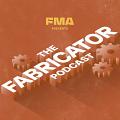
All Episodes
-
 Ep. 053
Ep. 053 -
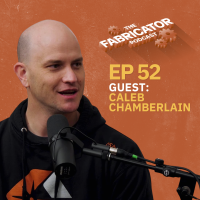 Ep. 052
Ep. 052 -
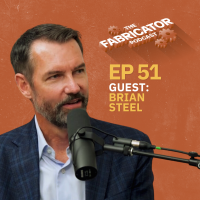 Ep. 051
Ep. 051 -
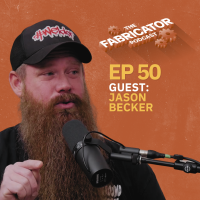 Ep. 050
Ep. 050 -
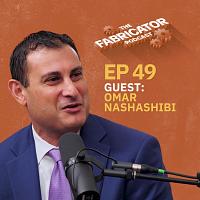 Ep. 049
Ep. 049 -
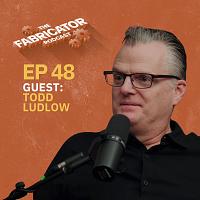 Ep. 048
Ep. 048 -
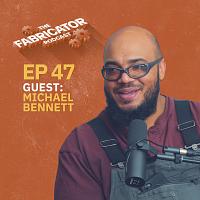 Ep. 047
Ep. 047 -
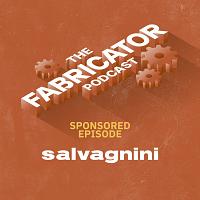 Bonus
Bonus -
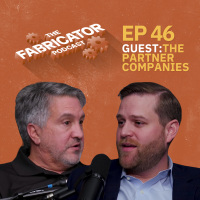 Ep. 046
Ep. 046 -
 Ep. 045
Ep. 045 -
 Ep. 044
Ep. 044 -
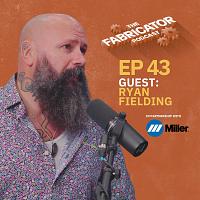 Ep. 043
Ep. 043 -
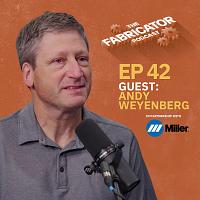 Ep. 042
Ep. 042 -
 Ep. 041
Ep. 041 -
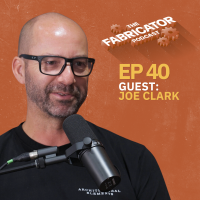 Ep. 040
Ep. 040 -
 Ep. 039
Ep. 039 -
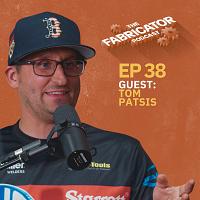 Ep. 038
Ep. 038 -
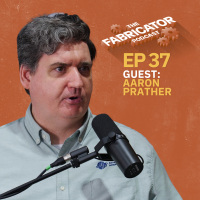 Ep. 037
Ep. 037 -
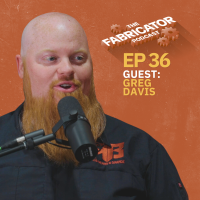 Ep. 036
Ep. 036 -
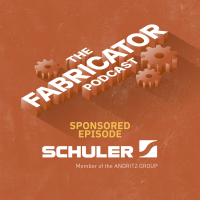 BonusHow hydroforming works and serves metal manufacturing with Schuler
BonusHow hydroforming works and serves metal manufacturing with Schuler -
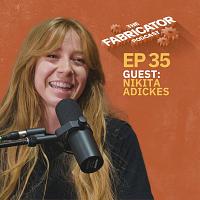 Ep. 035
Ep. 035 -
 Ep. 034
Ep. 034 -
 Ep. 033
Ep. 033 -
 Ep. 032
Ep. 032 -
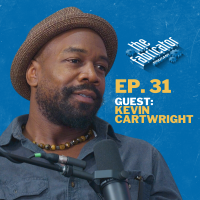 Ep. 031
Ep. 031
























